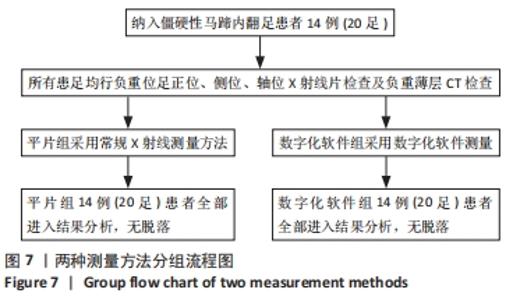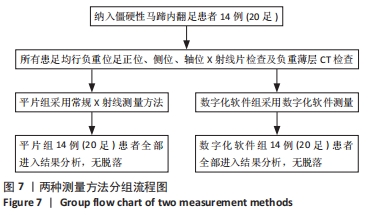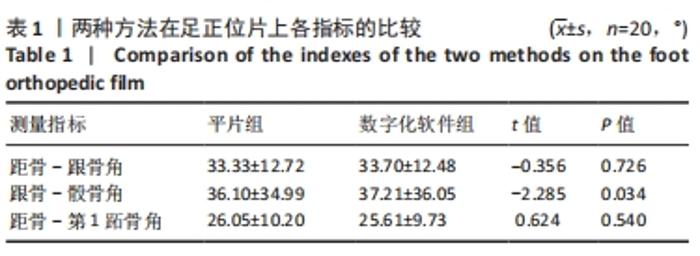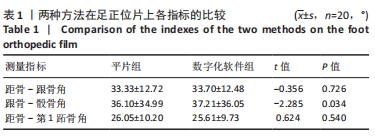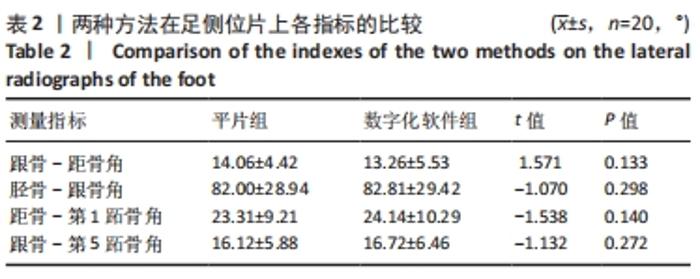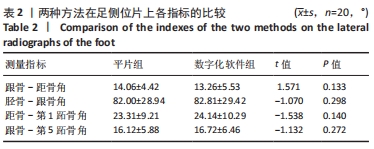[1] DAVE M, RANKIN J, PEARCE M, et al. Global prevalence estimates of three chronic musculoskeletal conditions: club foot, juvenile idiopathic arthritis and juvenile systemic lupus erythematosus. Pediatr Rheumatol Online J.2020;18(1):49.
[2] MAI CT, ISENBURG JL, CANFIELD MA, et al. National population-based estimates for major birth defects, 2010-2014. Birth Defects Res. 2019; 111(18):1420-1435.
[3] WANG H, BARISIC I, LOANE M, et al. Congenital clubfoot in Europe: A population-based study. Am J Med Genet A. 2019;179(4):595-601.
[4] ANSAR A, RAHMAN AE, ROMERO L, et al. Systematic review and meta-analysis of global birth prevalence of clubfoot: a study protocol. BMJ Open. 2018;8(3):e019246.
[5] PETERSON N, PRIOR C. Correction of the Neglected Clubfoot in the Adolescent and Adult Patient. Foot Ankle Clin. 2020;25(2):205-220.
[6] Ferreira RC, Costa MT, Lotti C, et al.Minimally Invasive Surgery Using the Circular External Fixator to Correct Neglected Severe Stiff Equinocavus Foot Deformities. Foot & Ankle Orthopaedics. 2018; 3(3):1-8.
[7] 秦泗河,张永红,臧建成,等.Ilizarov技术治疗成人僵硬型马蹄内翻足临床诊疗专家共识(2019版)[J].中华骨与关节外科杂志,2019, 12(11):841-847.
[8] 刘旻,张永红.僵硬性马蹄足畸形的诊断与治疗[J].实用骨科杂志, 2015,21(11):1011-1014.
[9] 牟朋林,杨建惠,刘志奎.儿童僵硬型马蹄内翻足的治疗策略[J].中国骨科临床与基础研究杂志,2019,11(1):20-24.
[10] RIGANTI S, COPPA V, NASTO LA, et al. Treatment of complex foot deformities with hexapod external fixator in growing children and young adult patients. Foot Ankle Surg. 2019;25(5):623-629.
[11] AJMERA A, JAIN S, SINGH AK, et al. Simultaneous lateral column shortening along with differential distraction by Joshi’s external stabilization system for rigid neglected clubfoot correction. J Pediatr Orthop B. 2019;28(6):579-585.
[12] AKINCI O, AKALIN Y. Medium-term results of single-stage posteromedial release and triple arthrodesis in treatment of neglected clubfoot deformity in adults. Acta Orthop Traumatol Turc. 2015;49(2):175-183.
[13] BINA S, PACEY V, BARNES EH, et al. Interventions for congenital talipes equinovarus (clubfoot). Cochrane Database Syst Rev. 2020;5:CD008602.
[14] 刘核达, 赵明明, 杨宗宇, 等. 三关节融合联合软组织平衡技术治疗成人重度僵硬型高弓马蹄内翻足效果分析[J]. 中国骨与关节损伤杂志,2018,33(10):102-104.
[15] PIERZ KA, LLOYD JR, SOLOMITO MJ, et al. Lower extremity characteristics in recurrent clubfoot: Clinical and gait analysis findings that may influence decisions for additional surgery. Gait Posture. 2020; 75:85-92.
[16] GOYAL N, BARIK S, SINGH V, et al. Assessment of severity of clubfoot in walking children by combined multiple tools: A new classification system. Foot (Edinb). 2020;45:101718.
[17] GOZAR H, DERZSI Z, CHIRA A, et al. Finite-element-based 3D computer modeling for personalized treatment planning in clubfoot deformity: Case report with technique description. Medicine (Baltimore). 2018; 97(24):e11021.
[18] KAMATH SU, AUSTINE J. Radiological assessment of congenital talipes equinovarus (clubfoot): Is it worthwhile? Foot (Edinb). 2018;37:91-94.
[19] GALVEZ M, ASAHI T, BAAR A, et al. Use of Three-dimensional Printing in Orthopaedic Surgical Planning. J Am Acad Orthop Surg Glob Res Rev. 2018;2(5):e071.
[20] MORASIEWICZ P, BURZYNSKA K, ORZECHOWSKI W, et al. Three-dimensional printing as a technology supporting the treatment of lower limb deformity and shortening with the Ilizarov method. Med Eng Phys. 2018;57:69-74.
[21] GANESAN B, YIP J, AL-JUMAILY A, et al. A novel 3D evaluation method for assessing bone to bone relationships in clubfoot.Eur Rev Med Pharmacol Sci. 2019;23(5):1882-1890.
[22] 刘永. Mimics软件三维重建在临床骨科疾病中的应用[J]. 中医临床研究,2020,12(9):127-130.
[23] JAVAID M, HALEEM A. Impact of industry 4.0 to create advancements in orthopaedics. J Clin Orthop Trauma. 2020;11(Suppl 4):S491-S499.
[24] 张文举, 张宇, 徐善强, 等. 个体化治疗对高弓马蹄内翻足畸形的疗效分析[J]. 中国骨与关节损伤杂志,2017,32(10):1045-1047.
[25] 王文成, 张兴飞, 许亚军. 数字化技术在踇外翻治疗中的应用[J]. 中国组织工程研究,2021,25(12):1911-1916.
[26] 张鹏, 钟宗雨, 金泽亚,等. 基于足负重位CT影像应用Mimics软件测量踇外翻相关指标[J]. 中华解剖与临床杂志,2018,23(1):7-13.
[27] 张兴飞, 李慧民, 许亚军. 3-matic软件测量负重状态平足指标的可行性分析[J]. 中国数字医学,2020,15(3):24-27.
[28] KANG S, PARK SS. Lateral Tibiocalcaneal Angle As a Determinant for Percutaneous Achilles Tenotomy for Idiopathic Clubfeet. J Bone Joint Surg Am. 2015;97(15):1246-1254.
[29] 黄坚汉, 蒙诗景, 夏丽伟, 等. Ilizarov技术治疗成人僵硬马蹄内翻足[J]. 临床骨科杂志,2018,21(5):113-115.
[30] KNUPP M, BARG A, BOLLIGER L, et al. Surgical Treatment of Overcorrected Clubfoot Deformity. JBJS Essent Surg Tech. 2014;3(1):e4.
[31] ZARGARBASHI R, ABDI R, BOZORGMANESH M, et al. Anterior Distal Hemiepiphysiodesis of Tibia for Treatment of Recurrent Equinus Deformity Due to Flat-Top Talus in Surgically Treated Clubfoot. J Foot Ankle Surg. 2020;59(2):418-422.
[32] Van Bosse HJP. Challenging clubfeet: the arthrogrypotic clubfoot and the complex clubfoot. J Child Orthop. 2019;13(3):271-281.
[33] 张问广, 陈后平, 任冲, 等. 32例马蹄内翻足复发或畸形残留的原因分析[J]. 贵州医药,2018,42(9):1124-1125.
[34] 张戈, 郑超, 卢虹旭, 等. Carroll手术治疗先天性马蹄足术后复发的相关危险因素分析[J]. 第三军医大学学报,2018,40(14):1311-1315.
[35] KANG MS, HWANG IY, PARK SS. Radiographic Prognostic Factors for Selective Soft Tissue Release After Ponseti Failure in Young Pediatric Clubfoot Patients. Foot Ankle Int. 2018;39(6):712-719.
[36] GRAF AN, KUO KN, KURAPATI NT, et al. A Long-term Follow-up of Young Adults With Idiopathic Clubfoot: Does Foot Morphology Relate to Pain? J Pediatr Orthop. 2019;39(10):527-533.
[37] SHABTAI L, HEMO Y, YAVOR A, et al. Radiographic Indicators of Surgery and Functional Outcome in Ponseti-Treated Clubfeet. Foot Ankle Int. 2016;37(5):542-547.
[38] MISHIMA K, KITOH H, MATSUSHITA M, et al. Early radiographic risk factors for rigid relapse in idiopathic clubfoot treated with the Ponseti method. Foot Ankle Surg. 2018;24(6):509-513.
[39] MILLER CP, GHORBANHOSEINI M, EHRLICHMAN LK, et al. High Variability of Observed Weight Bearing During Standing Foot and Ankle Radiographs. Foot Ankle Int. 2017;38(6):690-693.
[40] Widhe T, Berggren L. Gait analysis and dynamic foot pressure in the assessment of treated clubfoot. Foot Ankle Int. 1994;15(4):186-190.
[41] Shelton TJ, Singh S, Bent Robinson E, et al. The Influence of Percentage Weight-Bearing on Foot Radiographs. Foot Ankle Spec. 2019;12(4):363-369.
[42] 张树, 王智, 张建中. 负重CT在足踝疾病诊疗中的应用[J].足踝外科电子杂志,2017,4(2):62-65.
|
